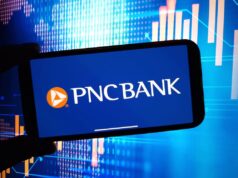A bold takeover attempt by Ripple to acquire rival stablecoin issuer Circle has collapsed, setting the stage for a direct showdown between two of the most strategically positioned players in the digital payments sector. As Ripple arms itself with its newly launched stablecoin RLUSD and Circle sharpens focus on its IPO ambitions, the failure of this deal marks the opening shot in what could become the definitive battle for control of compliant crypto-based settlement infrastructure.
Ripple’s Ambition to Leap Ahead
Ripple’s $5 billion bid was more than an acquisition, it was a shortcut. By absorbing Circle and its flagship USDC stablecoin, Ripple could have overnight vaulted itself to the forefront of institutional-grade stablecoin infrastructure. USDC has been built around regulatory transparency, dollar backing, and mainstream integrations, giving it significant credibility in both crypto and fintech spaces.
Instead, Ripple will have to take the longer route, and it’s already in motion. The company launched its own stablecoin, RLUSD, in December 2024, following its announcement earlier that year. Fully backed by U.S. dollar reserves and issued on both Ethereum and the XRP Ledger, RLUSD is Ripple’s answer to institutional demand for tokenized dollars. The failure to secure USDC only hardens Ripple’s commitment to making RLUSD the go-to asset for on-chain settlement and treasury management.
Circle Plays the Long Game
Circle’s rejection of the offer is a clear statement: the company believes it can unlock more value on the public market than in a buyout. With IPO plans in full swing and growing traction across global financial rails, Circle appears confident that USDC’s positioning in regulated finance will deliver better returns than Ripple’s cash offer.
While the private valuation remains undisclosed, the bid itself serves as an unintended benchmark. It placed Circle’s value above $5 billion in the eyes of potential investors. In declining the deal, Circle may have gained more than it gave up: public validation, leverage in upcoming institutional deals, and a reinforced brand as the most regulation-aligned stablecoin issuer in the market.
Strategic Collision Course
The rejection draws a clear battle line between the two firms. Ripple, flush with capital and post-SEC lawsuit momentum, is looking to buy its way into the core of digital finance. Already embedded in banking and payments infrastructure, Circle is betting on continued organic growth backed by compliance and credibility.
Both are vying for the same prize: institutional trust. As traditional finance inches further into tokenization, the question becomes which stablecoin, RLUSD or USDC, will power the rails of tomorrow’s global settlement systems.
>>> Read more: Ripple Hidden Road Acquisition: A Strategic Shift
The deal’s collapse signals more than a failed merger. It reveals a shift in crypto’s center of gravity from speculative tokens to stable, fiat-anchored infrastructure. And in this race, Ripple and Circle are no longer potential partners but direct competitors.
Readers’ frequently asked questions
What exactly is a stablecoin, and how is it different from cryptocurrencies like Bitcoin or XRP?
A stablecoin is a digital asset designed to maintain a stable value by being pegged to a real-world asset, most commonly a fiat currency like the U.S. dollar. For example, 1 unit of a USD-backed stablecoin like USDC or RLUSD is always intended to be worth $1. This stability is achieved by holding equivalent assets (like dollars or U.S. Treasuries) in reserve. In contrast, cryptocurrencies like Bitcoin or XRP fluctuate in price based on market demand and speculation. Stablecoins are primarily used for payments, trading, and holding value without exposure to volatility. They act more like digital dollars, making them especially appealing to both businesses and regulators.
Can I use RLUSD or USDC like regular dollars for payments or purchases?
Technically, yes. But it depends on where you are and what platforms or apps you use. RLUSD and USDC are both digital tokens designed to represent U.S. dollars on blockchain networks, but they aren’t accepted in most everyday retail settings. You can use them on crypto exchanges, in DeFi apps, or to transfer money internationally. Some fintech platforms and crypto debit cards do let you spend stablecoins, but they usually convert the tokens into fiat currency at the point of sale. For most users, stablecoins like RLUSD and USDC are currently more practical for trading, saving, or sending money digitally than for everyday shopping.
Is holding stablecoins like USDC or RLUSD safe? What if the company behind it fails?
Stablecoins are generally considered lower risk than volatile cryptocurrencies, but they are not risk-free. Their safety depends on whether the issuer truly holds enough reserves to back every token 1:1 with real dollars or equivalent assets. Both Circle (USDC) and Ripple (RLUSD) claim full backing by U.S. dollar reserves or short-term government bonds. They also publish regular audits or attestations to support this. However, unlike money in a bank account, stablecoin holdings are not insured by the FDIC. If the issuer fails or mismanages reserves, there’s a risk you could lose some or all of your funds. Regulatory oversight helps reduce this risk, which is why USDC and RLUSD emphasize compliance.
What Is In It For You? Action Items You Might Want to Consider
Watch RLUSD exchange listings and liquidity growth – early adoption could offer strategic entry points
Ripple is clearly investing heavily in positioning RLUSD as a serious USDC competitor. While still new, any announcements of major exchange integrations, DeFi pairings, or enterprise partnerships could rapidly shift demand. Traders should consider tracking RLUSD trading volumes and liquidity depth as indicators of growing traction and potential arbitrage or swing trading setups.
Keep an eye on Circle’s IPO timeline – it could trigger a USDC valuation repricing
With Circle turning down a $5B offer, its self-assessed value is clearly higher. The IPO will bring greater transparency into USDC’s financials and regulatory posture. This could influence market sentiment, not just for USDC, but for stablecoin dominance in general. Traders might want to prepare for volatility around the IPO event window and monitor token flows between stablecoins.
Position around the stablecoin rivalry – diversify stablecoin exposure
The Ripple–Circle split signals the start of a stablecoin arms race. Instead of sticking to a single stablecoin, consider diversifying between regulated options like USDC and RLUSD, especially across different chains. This can reduce counterparty risk while giving flexibility to move capital where yields, integrations, or spreads are more favorable.











[…] the company may have explored other strategic options earlier this year. The USDC issuer was reportedly approached with acquisition offers, including from major players in the crypto industry such as Ripple and Coinbase. The company has […]